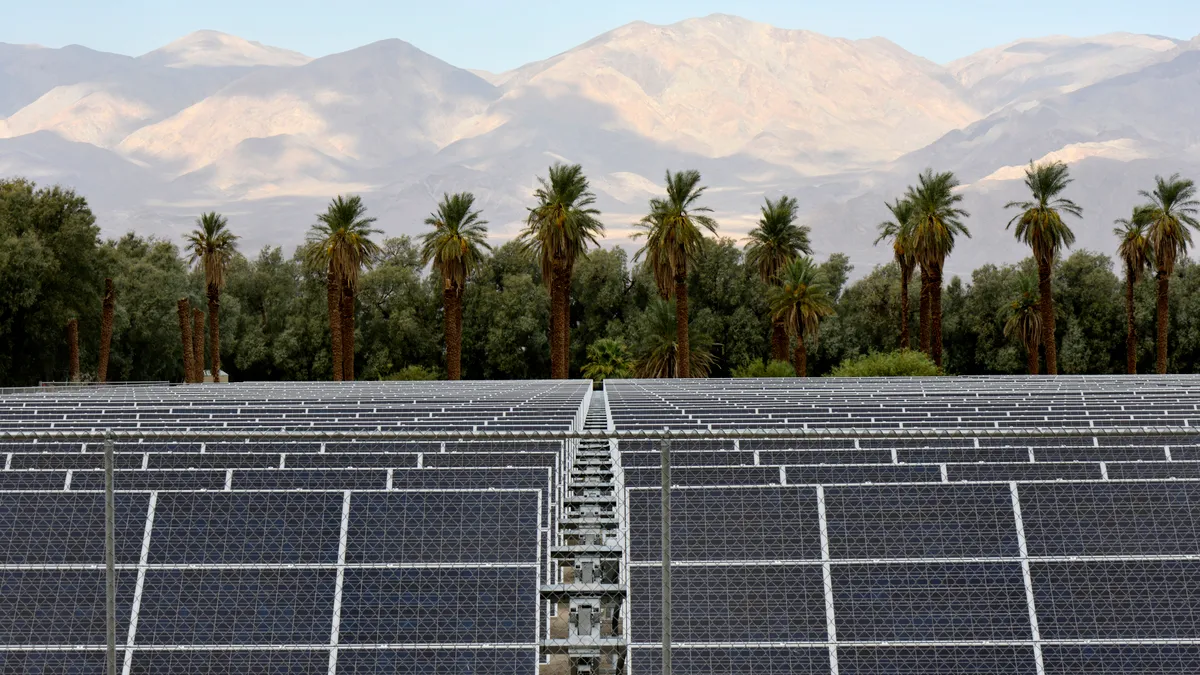Dive Brief:
-
Total U.S. solar installations fell 52% from the fourth quarter of 2021 to the first quarter of 2022, to 3.9 GW installed, according to the latest U.S. Solar Market Insight report by Wood Mackenzie and the Solar Energy Industries Association, released Tuesday. The first months of 2022 were the industry’s weakest quarter in two years, the report said.
-
Growth in residential solar continued, posting a 5% increase over the fourth quarter of 2021, according to the report. Community solar installations were down 59% compared with the end of last year, and utility-scale solar saw a 64% decrease.
-
The utility-scale solar pipeline took a “massive hit” from the Department of Commerce’s investigation into alleged tariff circumvention in Southeast Asia, according to Wood Mackenzie. However, an analyst for the company noted that the first-quarter declines began before the investigation was announced, pointing to the influence of broader supply chain constraints.
Dive Insight:
Disruptions triggered by the Department of Commerce’s anti-circumvention investigation appear to have taken a large bite out of the solar project pipeline, but other challenges were rising before the department’s March 28 announcement of the investigation, according to Wood Mackenzie research.
According to the quarterly U.S. Solar Market Insight report, 17.6 GW of utility-scale solar projects have been delayed by at least a year, and 450 MW have been canceled altogether. New utility-scale procurement has hit its lowest level since 2017, and Wood Mackenzie has cut its forecasts for 2022 solar deployments in half.
However, the downward trend began before the Department of Commerce announcement, according to Michelle Davis, principal solar analyst for Wood Mackenzie and lead author of the quarterly solar report. The investigation wasn’t launched until the very end of the first quarter, she said, suggesting at least some of the decline was the result of preexisting supply chain constraints that have built up over the last several quarters.
While Davis expects solar installations will remain slow for most of 2022, she said it is difficult to predict how the industry will perform in light of both the ongoing investigation and the Biden administration’s announced two-year delay on new solar tariffs. The administration’s actions could increase solar installations this year by 2-3 GW, Davis said, but Wood Mackenzie analysts have cut 6 GW from their forecasted pipeline U.S. deployments as a result of the investigation.
“There will be some upside” to the two-year tariff delay, Davis said, “but it will be somewhat limited because so much of the damage has already been done in the form of uncertainty, factories going idle and companies laying off workers,” she said.
Davis said she anticipates that for the next several quarters, only projects that have already secured solar panels will be built. Those that have yet to secure their supplies will likely be delayed, with Davis predicting “massive delays” continuing into 2023.













